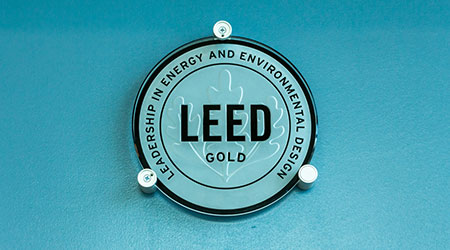When the decision was made to simultaneously pursue LEED, WELL, and FitWel certifications for the new Perkins and Will Dallas office, there were a number of unknowns, according to an article from Building Operating Management on the FacilitiesNet website.
Each rating system has different goals, some of which overlap. Other elements of the rating systems tend to contradict each other. Still, in the design of this new workplace within the Old Dallas High School each rating system has had its own unique impact on building occupants.
LEED and WELL both take significant deep dives into environmental quality. Multiple efforts were implemented to ensure high indoor air quality as a result: higher than normal MERV 13 filtration, an indoor air quality management plan implemented during construction, and multiple other design strategies. An unanticipated plus has been the noticeability of dust on the lighter colored desks, which were encouraged in order to perfect lighting distribution across the personal workspace area. While this dust is a bit of a visual nuisance, it would have likely gone unnoticed for years if not for the white desks, improving the indoor air quality through higher visibility that allows an opportunity for a deeper clean.
Each of the three rating systems has different goals around the idea of water, but each system’s approach has valid points. LEED takes a focus on reducing the amount of water used and wasted—an important and simple strategy that has been proven effective. WELL and FitWel focus on occupant health, but WELL has a special focus on providing high quality water to building occupants. Both certification programs take a strong interest in making water easily accessible to everyone in the building.

 UF Health Hospitals Rely on Green Globes to Realize Their Full Potential
UF Health Hospitals Rely on Green Globes to Realize Their Full Potential How Healthcare Facilities Can Be Truly Disaster-Resilient
How Healthcare Facilities Can Be Truly Disaster-Resilient TriasMD Breaks Ground on DISC Surgery Center for San Fernando Valley
TriasMD Breaks Ground on DISC Surgery Center for San Fernando Valley Bigfork Valley Hospital Falls Victim to Data Breach
Bigfork Valley Hospital Falls Victim to Data Breach AI-Driven Facilities: Strategic Planning and Cost Management
AI-Driven Facilities: Strategic Planning and Cost Management